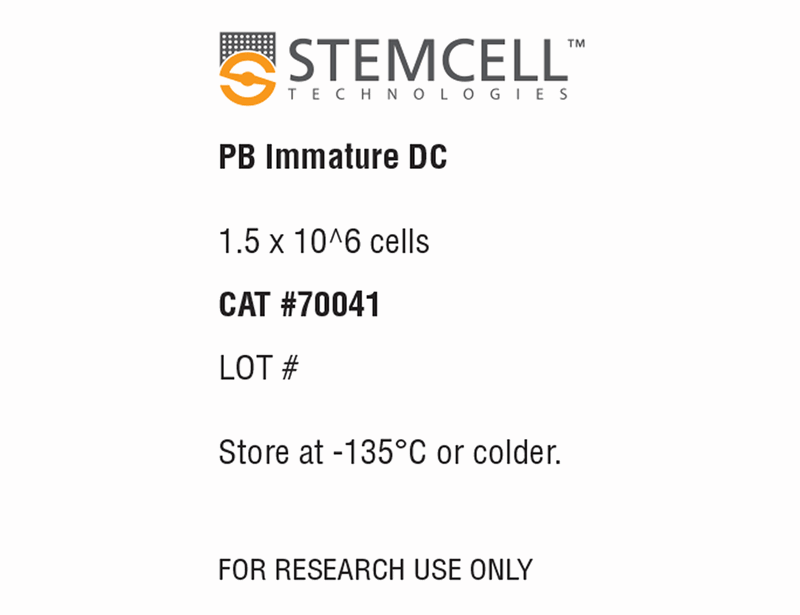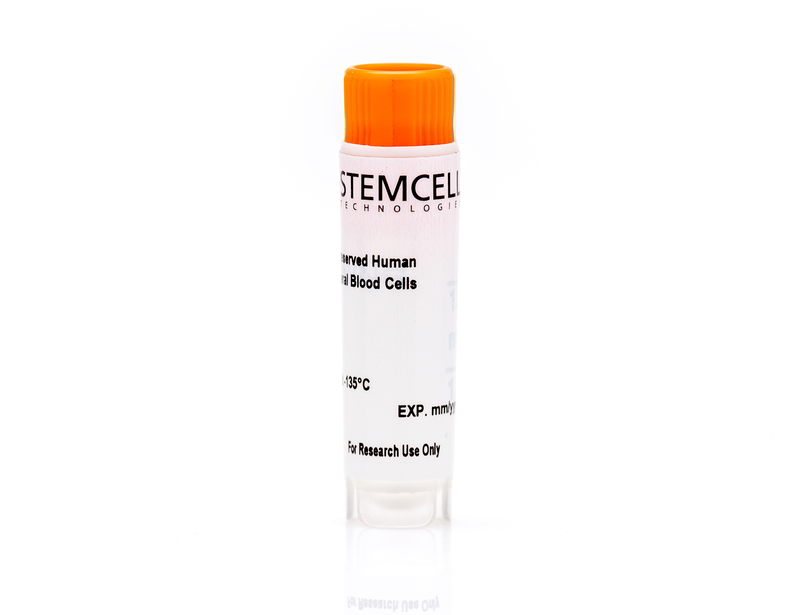Human Peripheral Blood Immature Dendritic Cells, Frozen
Primary human cells, frozen
概要
Primary human immature dendritic cells (DCs) were derived from immunomagnetically selected peripheral blood (PB) monocytes. Monocytes were cultured in RPMI 1640 Medium with 10% fetal bovine serum (FBS), GM-CSF and IL-4 to generate immature DCs. PB was collected using acid-citrate-dextrose solution A (ACDA) as the anticoagulant.
Cells were obtained using Institutional Review Board (IRB)-approved consent forms and protocols.
Certain products are only available in select territories. Please contact your local Sales representative or Product & Scientific Support at techsupport@stemcell.com for further information.
Browse our Frequently Asked Questions (FAQs) on Primary Cells.
Cells were obtained using Institutional Review Board (IRB)-approved consent forms and protocols.
Certain products are only available in select territories. Please contact your local Sales representative or Product & Scientific Support at techsupport@stemcell.com for further information.
Browse our Frequently Asked Questions (FAQs) on Primary Cells.
Contains
• CryoStor® CS10
Subtype
Frozen
Cell Type
Dendritic Cells, Monocytes
Species
Human
Cell and Tissue Source
Peripheral Blood
Donor Status
Normal
Purity
The purity of immature DCs is ≥ 90% for CD11c and MHC class II, ≤ 30% for CD83, and ≤ 5% for CD14high by flow cytometry.
技术资料
| Document Type | 产品名称 | Catalog # | Lot # | 语言 |
|---|---|---|---|---|
| Product Information Sheet | Human Peripheral Blood Immature Dendritic Cells, Frozen | 70041 | All | English |
数据及文献
Publications (1)
Toxicology letters 2015 AUG
Differential cytotoxicity of long-chain bases for human oral gingival epithelial keratinocytes, oral fibroblasts, and dendritic cells.
Abstract
Abstract
Long-chain bases are present in the oral cavity. Previously we determined that sphingosine, dihydrosphingosine, and phytosphingosine have potent antimicrobial activity against oral pathogens. Here, we determined the cytotoxicities of long-chain bases for oral cells, an important step in considering their potential as antimicrobial agents for oral infections. This information would clearly help in establishing prophylactic or therapeutic doses. To assess this, human oral gingival epithelial (GE) keratinocytes, oral gingival fibroblasts (GF), and dendritic cells (DC) were exposed to 10.0-640.0 μM long-chain bases and glycerol monolaurate (GML). The effects of long-chain bases on cell metabolism (conversion of resazurin to resorufin), membrane permeability (uptake of propidium iodide or SYTOX-Green), release of cellular contents (LDH), and cell morphology (confocal microscopy) were all determined. GE keratinocytes were more resistant to long-chain bases as compared to GF and DC, which were more susceptible. For DC, 0.2-10.0 μM long-chain bases and GML were not cytotoxic; 40.0-80.0 μM long-chain bases, but not GML, were cytotoxic; and 80.0 μM long-chain bases induced cellular damage and death in less than 20 min. The LD50 of long-chain bases for GE keratinocytes, GF, and DC were considerably higher than their minimal inhibitory concentrations for oral pathogens, a finding important to pursuing their future potential in treating periodontal and oral infections.


